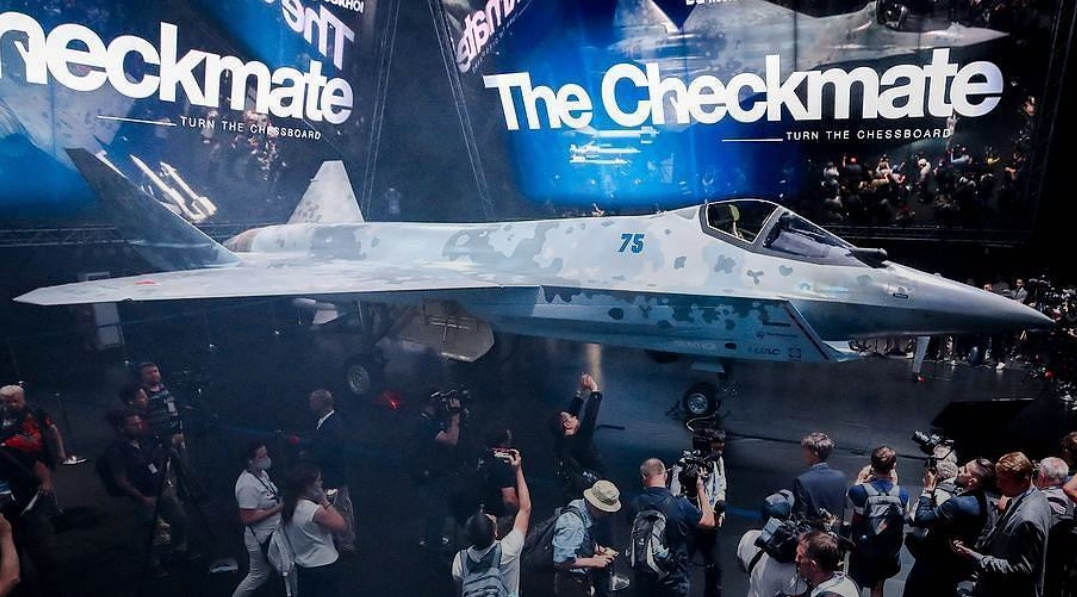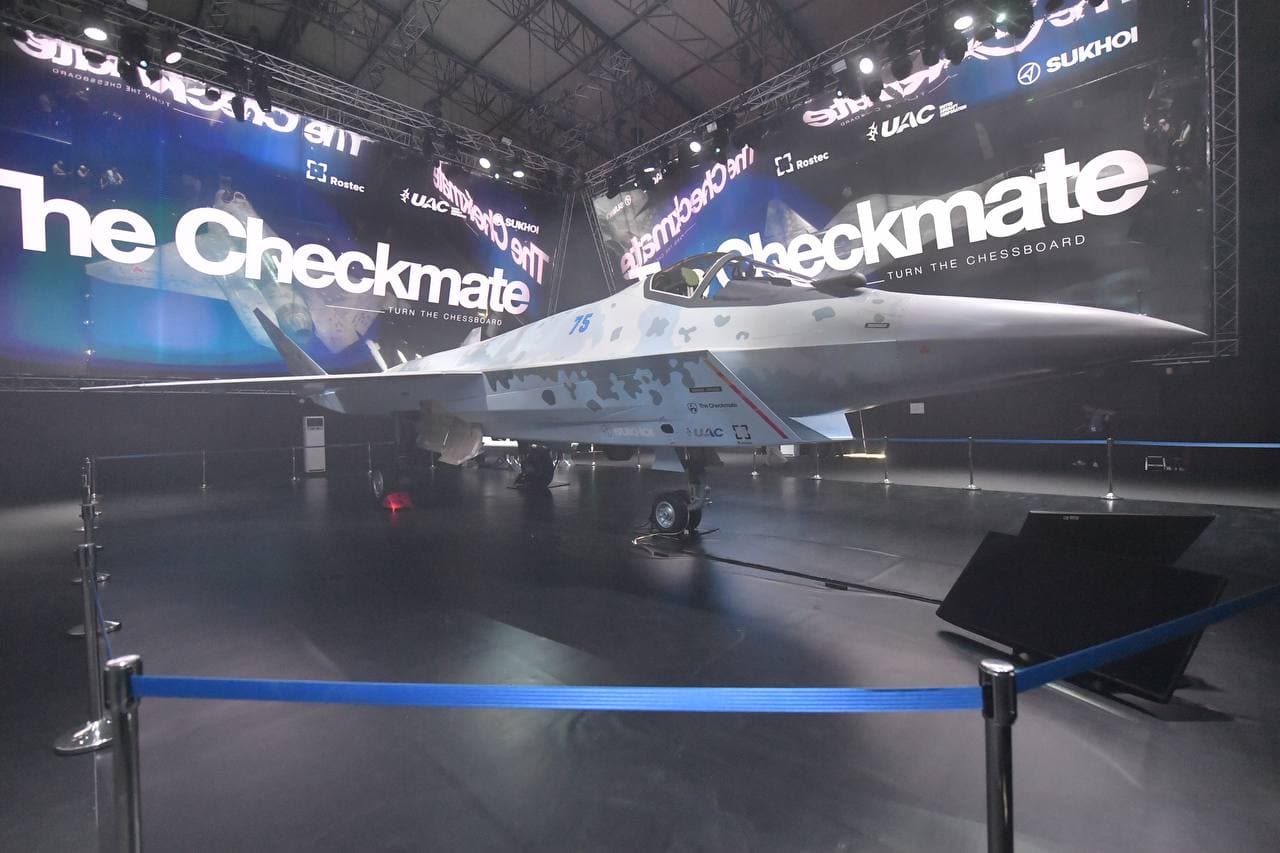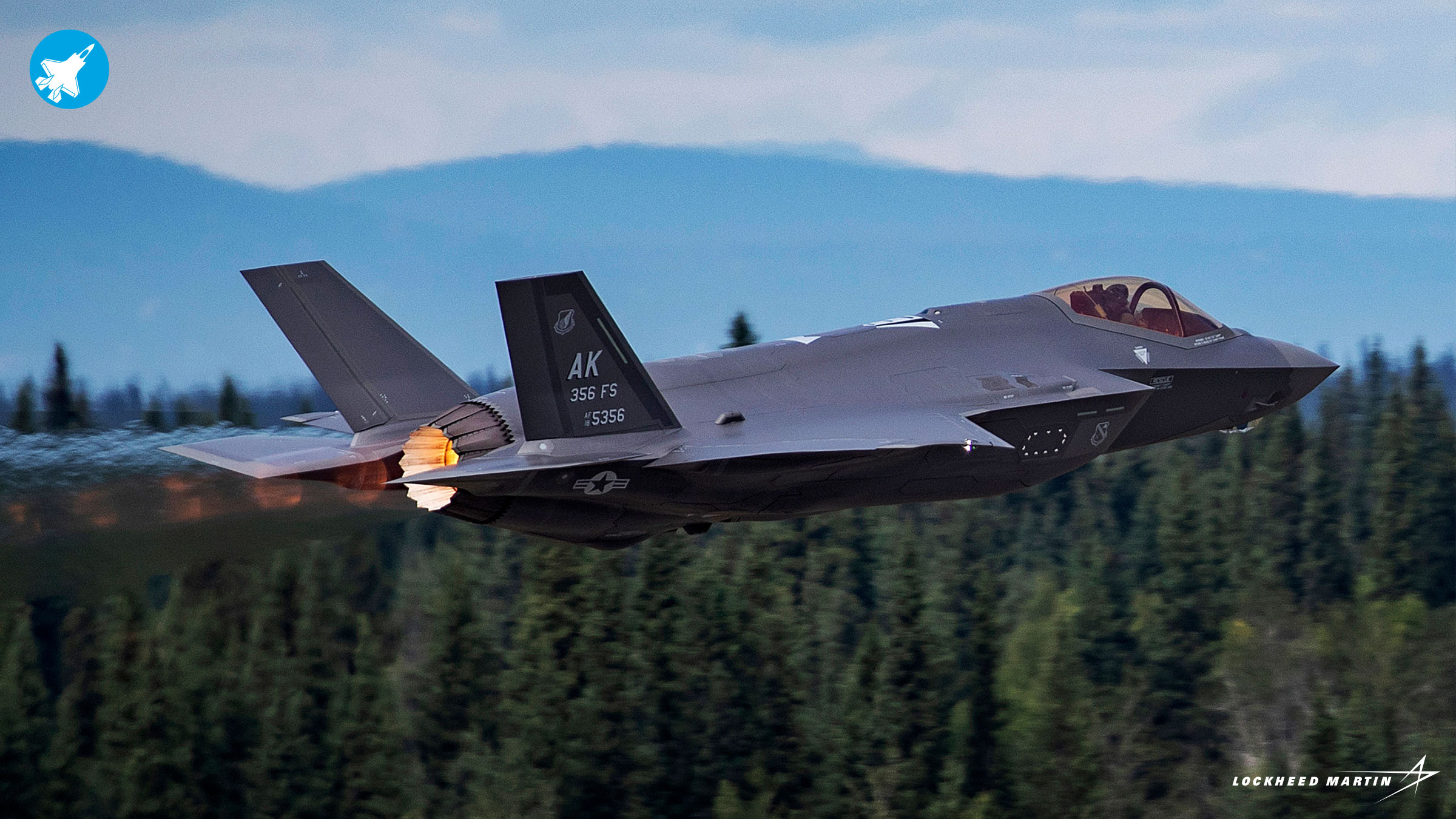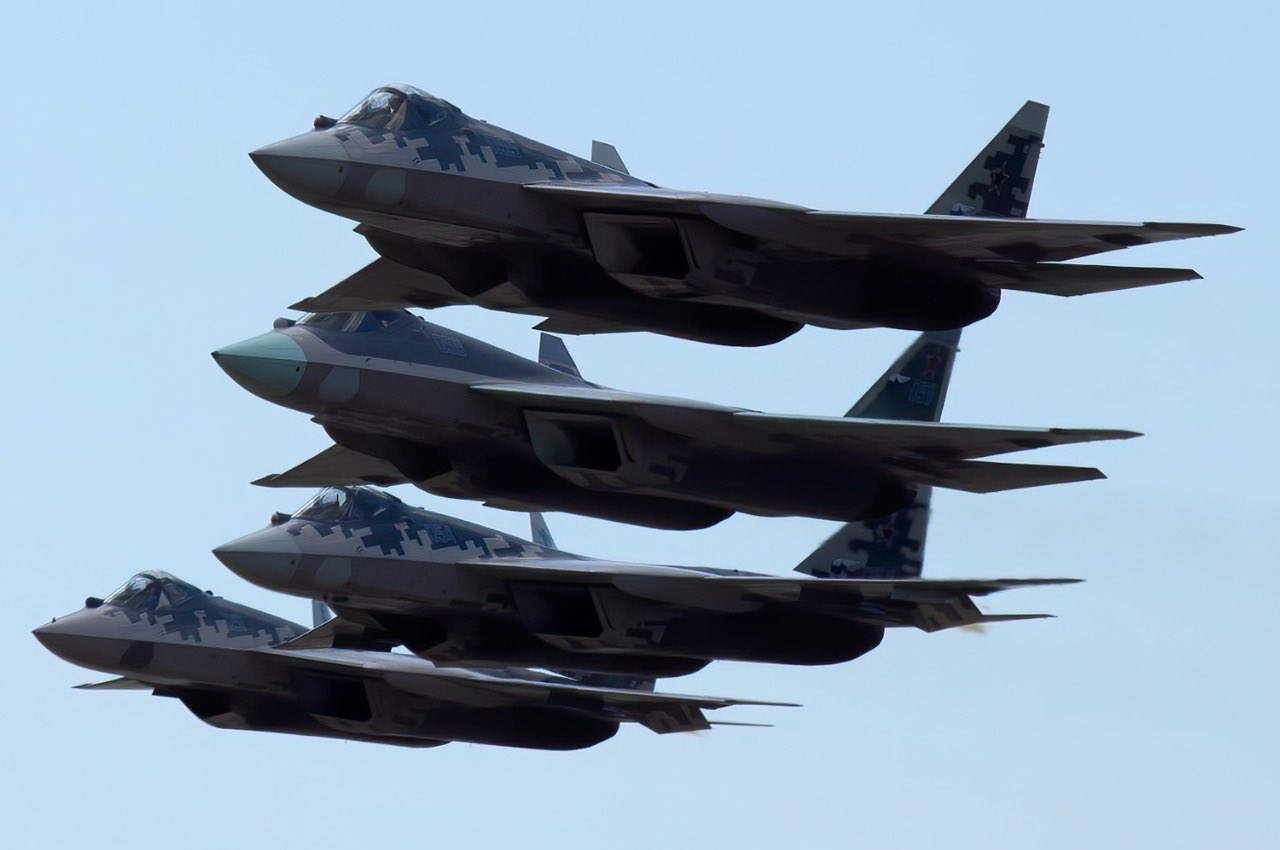Observers have been noting how the Sukhoi Su-75 ‘CheckMate’ revealed in July this year represented a transformation in Russian fighter design, based on the plane’s striking similarities to US jets (the F-35, and the Boeing X-32 experimental aircraft).
‘Rafale Revolution’: Why Indian Army Needs A ‘Bureaucratic Rejig’ To Compete With China In New-Age Warfare?
While certainly a marked departure from how Moscow traditionally designed its jets, it also reflects adherence to established Russian military doctrine and its view of the battlefield, which remains largely unchanged, when one considers the geopolitical and industrial context that surrounds its introduction.
The CheckMate is a single-engine fighter jet, the first such aircraft the Russians have designed in decades since the MiG-23.
Also, unlike any of the Russian planes in the past, the jet developed by United Aircraft Corporation (UAC) has a chin air intake, much like the X-32. It retains the Su-57’s front nose cone, canopy, and front fuselage design with the distinctive Infrared Search and Track (IRST) outside the cockpit.

The large wingspan gives ‘high lift efficiency’, again very similar to the Su-57, which continues the Russian legacy and penchant for super-maneuverability. That it has a thrust-vectoring engine testifies to this fact.
To reduce the Radar Cross Section (RCS), the plane has a ‘V’-shaped vertical stabilizer configuration. Experts expect a lot of commonality of parts between the two aircraft which eases the burden on the manufacturing ecosystem.
A lot of groundwork was laid during the development of the PAK-FA (or the Su-57 project itself), where besides borrowing several design aspects, the Checkmate also uses the same flight computers, cockpit instrumentation, AI logic, front fuselage section, engine and flight control system.
India Close To Inducting Its Latest Tejas MK-1A Jets; Can It Beat Pakistani JF-17 In Air Combat & Exports?
Russian Su-75 And US F-35
What stands out are two direct takeaways from the US F-35. One, a wide-range all-angle optical view system similar to EODAS/OTS was installed under the fuselage. Thus one can assume the CheckMate to be used for ground strike roles with a data sharing link to be shared with other assets.
Second, the Matryoshka automated logistic support system that plans repair and maintenance operations, using AI-based pre-flight checks, thus significantly reducing the cost and increase the efficiency of after-sales service.
This is based on the F-35 ALIS and ODIN systems, where the former was replaced with the latter owing to several complicated technical issues, much to the relief of the US ground crews.

Missiles and ordnance would be located in internal weapons bays like the Su-57, with external points also available since it is not a pure stealth aircraft. UAC chief Yuri Slyusar also said the aircraft has modular modification potential to be converted into a twin-seat role, to be achieved by replacing the fuselage head section.
This clearly means that the Su-75 CheckMate has a clear export target, meant to compete with the Swedish Saab Gripen and the US’ F-35 and F-16 fighters, and possibly even the Chinese J-10.
The fact that like the Su-57, the CheckMate too would be heavily marketed to the UAE, Vietnam, and possibly India, means that Sukhoi would be willing to have joint under-license production.

The plane would first undergo runway and taxi trials, with the first flight expected to be in 2023 and series production in 2026. However, possible problems include the under development Izdeliye 30 engines, that are yet to enter series production.
Russians, however, retain the option of installing the AL-31FP engines that also power China’s J-20 stealth fighter. The fact that the plane has a complete ‘open architecture’ to allow customers to install Russian, domestic and foreign systems shows the clear export-oriented goal of the aircraft.
With a unit cost of $25-30 million, it is less than half of $80 million of the F-35.
Mission Afghanistan: Why US, Germany Aggressively Deploying Their ‘Combat Helicopters’ To Kabul?
The Su-57 ‘Felon’
The Su-57 ‘Felon’, on the other hand, is a twin-engine jet with a fused-wing and body fuselage, drawing from the American ‘flying wing’ concept incorporated into the B-2 spirit.
Again a low-visibility plane that lacks the classic stealth features like F-22 and F-35, it is based on the Russian philosophy of simplicity that results in low life cycle and maintenance costs.

Videos show the Su-57 performing jaw-dropping maneuvers, mid-air stalls, Pugachev’s Cobras, and other stunts, which one can assume the CheckMate to match.
That nearly all of Russia’s aircraft are aerodynamically stable designs, which can function without a digital fly-by-wire only shows their reliance on a plane’s aerodynamic and kinematic performance to decide the outcome of an engagement.
Secondly, Russians have learned from the failure of overtly advanced programs like the F-35, and stealth maintenance issues associated with the F-22 Raptor, which the US is struggling with. And third, stealth itself has been found to be overrated, where experts are questioning the over-reliance on airpower to achieve joint force objectives.
More @ EurAsian Times
- US Experiments With ‘Revolutionary Air Combat Training’ For Fighter Pilots To Dogfight Russian, Chinese Jets
- Despite J-20 Stealth Jet, Why Is China Keen To Acquire Another Stealth Fighter – Russian Su-57 To Its Arsenal?





